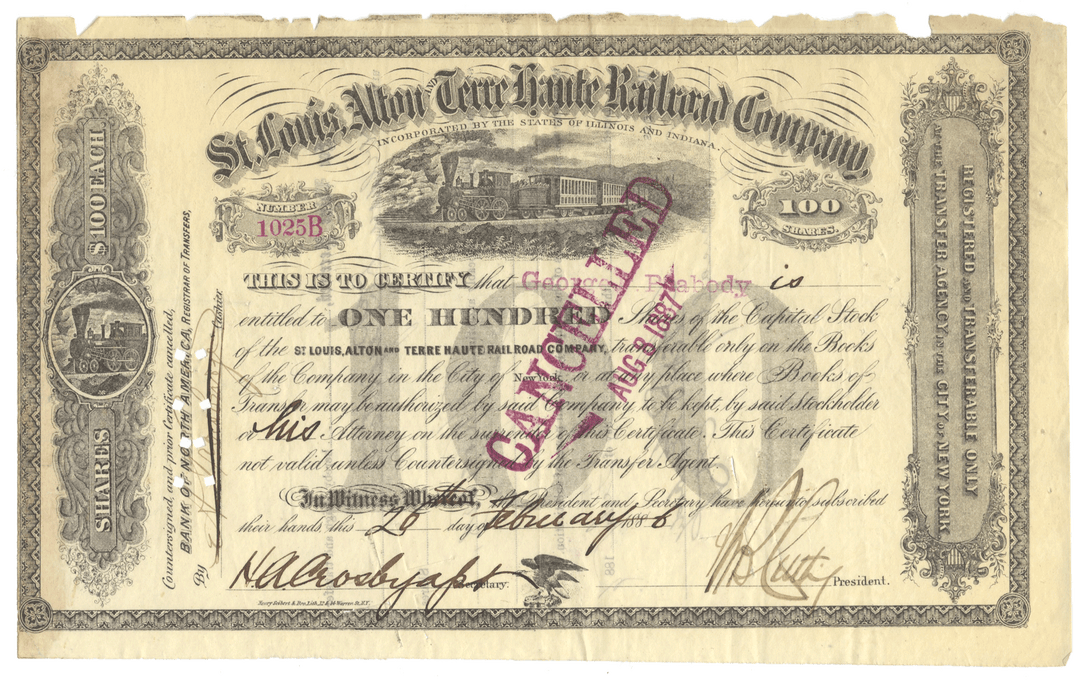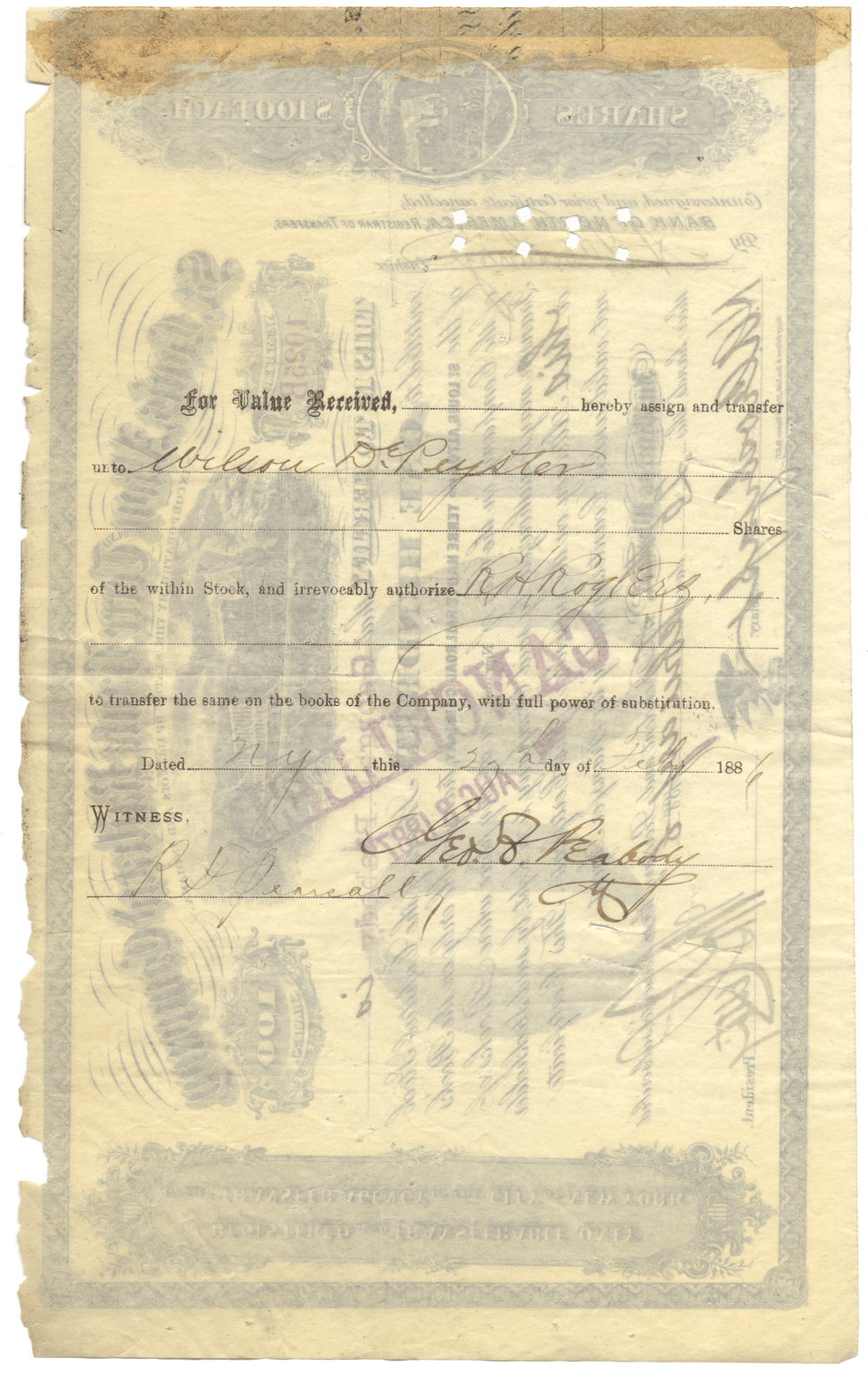St. Louis, Alton & Terre Haute Railroad
The charter for the Terre Haute & Richmond Railroad Company was secured in January 1847. The line between Terre Haute and Indianapolis soon became the sole focus of the TH&R’s construction efforts - so much so that Terre Haute interests would be forced to seek a separation of the company in 1851. The eastern half of the line would be rechartered and completed as the Indiana Central. It was a split of no great consequence because the TH&R’s success no longer depended on the line to Richmond.
Construction started late in 1849, and the entire 73-miles of the TH&R opened in February 1852.
With the railroad in operation and immediately successful, former president Chauncey Rose turned his attention toward extending the TH&R’s reach westward to St. Louis. The Terre Haute & Alton was built in 1854 and consolidated with the Belleville & Illinoistown in 1856 as the Terre Haute, Alton & St. Louis. For a time, at least, it was the TH&R’s primary western connection.
In April 1858 an angry TH&R board instructed its superintendent not to deliver any more freight to the Alton line. In an attempt to remain solvent, the Alton line had begun to delay its payments for interline freight and accumulated a deficit in its account with the TH&R. By year’s end the TH&R board was threatening legal action if some form of regular payment was not initiated to liquidate the debt. Despite the hostile relations, business as usual continued over the two lines.
With the outbreak of the Civil War in 1861 and the virtual closure of the Mississippi River to commercial traffic, the TH&R ceased to be a small, hometown enterprise. Additional traffic required additional equipment, and more locomotives and cars meant increased shop space, more machinery, and a bigger workforce. Final resolution of the claim against the Alton line came in June 1862, and it was reorganized as the St. Louis, Alton & Terre Haute.
Over the years, the company acquired a number of smaller lines, including the Belleville & Illinoistown Railroad, the Belleville & Southern Illinois Railroad, the Belleville & Eldorado Railroad, the Carbondale & Shawneetown Railroad Company, and the St. Louis Coal Railroad.
Most of the company's assets eventually fell under the control of the Illinois Central Railroad.








